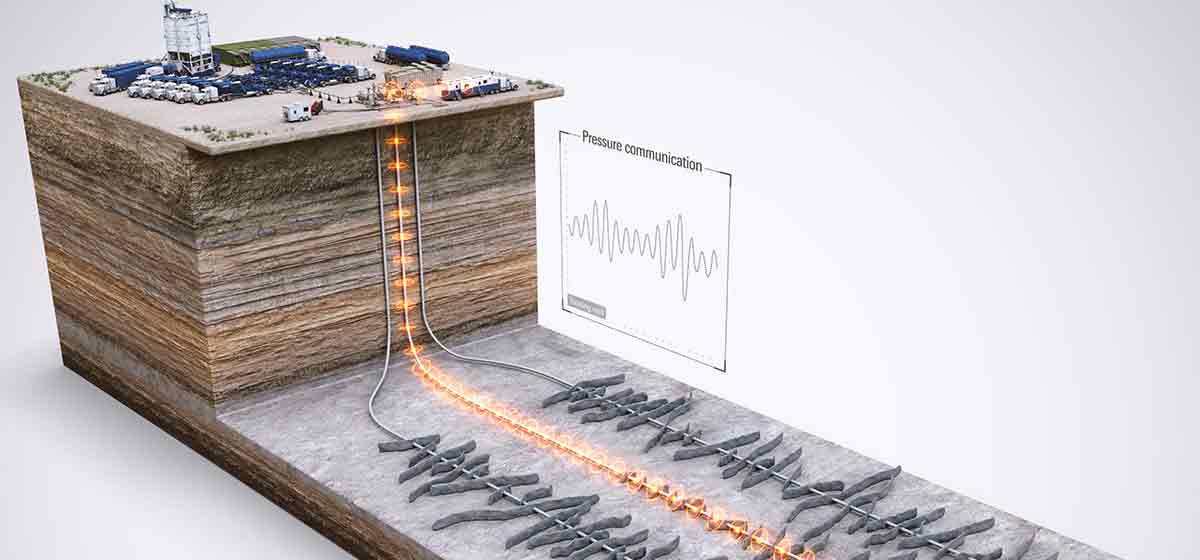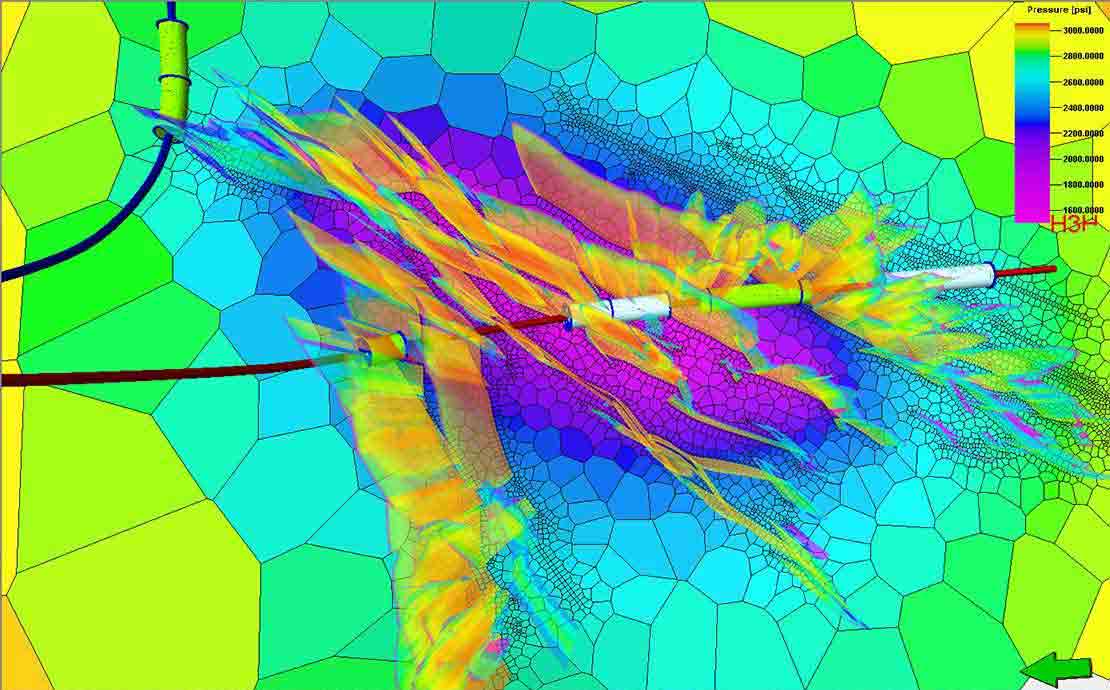Kinetix RT
Real-time stimulation optimization software
Use surface and downhole data to facilitate immediate decisions during fracturing and acidizing operations.


In two infill wells, WellWatcher Stim service sees frac hits in up to 61% of stages stimulated with conventional fracturing, North Dakota

Where conventional fracturing aims to create one long fracture without much complexity—aiming for long fractures and deep reach—BroadBand Shield service uses far-field diversion to restrict fracture length, using the energy to create more fractures with shorter lengths.
By employing an engineered fracture design that limits fracture growth, the service both optimizes the fracture geometry and increases the fracture complexity in unconventional reservoirs. This combination helps improve reservoir drainage by maximizing reservoir contact within defined areas and limiting pressure drops along the edge and outside of the desired drainage area.
Whereas conventional near-wellbore diversion relies on relatively large particles to temporarily bridge perforations and smaller particles and fibers to plug the permeability between the large particles, BroadBand Shield service uses much smaller multimodal diversion particles. The engineered particle sizes and pumping schedules ensure that these particles can pass easily through the perforations and fractures to permanently plug only the fracture tips.
The smaller particle sizes are more easily transported even in relatively low-viscosity fluids and into smaller fractures than are possible with conventional proppant. In addition, the engineered pumping schedules place the diversion material only before conventional proppant stages, which means they have no adverse impact on conductivity in the propped fracture.